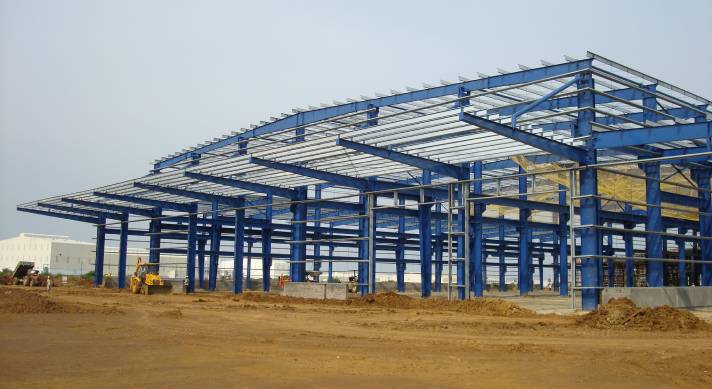The first generation of structure fabrication employees started out as welders and later became batch-checkers or quality control people. They made sure the pieces fit properly before welding and later advanced to become lead people who helped the department supervisor and ultimately management. Even today, the use of steel tapes and paper drawings remains common in some structures, but the technology has evolved, and speed and precision have become the hallmarks of structural fabrication. Listed below are some of the most common types of structures created and the process of fabricating them.
Steel Material
Considering its versatility and speed, steel is often the preferred choice for structural construction. The erection process is simple, and structural elements are fabricated on-site to precise specifications. The fast erection process allows construction crews to avoid disruption of neighboring structures. Often, steel structures also result in lower project costs. A national company like Kloeckner Metals has the latest fabrication and processing technologies, along with the most innovative customer service solutions.
It Is Durable
Whether you’re looking to build a new warehouse or renovate an old industrial site, Durable Steel Structures has you covered. Our highly trained professionals have completed over three million pounds of steel and concrete in the Metro-Baltimore/Washington DC area alone. In addition to providing high-quality building structures, we provide services that range from complete steel engineering analysis to total structure rebuilding. We also employ a Maryland Certified structural engineer on staff.
It Is Corrosion-Resistant
There are several methods of making steel corrosion-resistant for structure fabrication. Hot-dip galvanizing, for example, involves dipping steel elements into molten zinc. The zinc thereby forms a protective layer, which protects the steel element from corrosion. For more information on galvanizing, visit the American Galvanizers Association. Stainless structural steel (A709-50CR), on the other hand, contains chromium. This is a relatively new steel alloy containing more than 10% chromium.
It Is Tensile
There are several advantages of a tensile structure. Compared to a traditional structure, it can be installed quickly, and is much lighter. It provides the advantage of bright daylighting, while still maintaining a durable structure. The fabric membrane can be tailored to fit your needs perfectly, allowing you to experiment with your structure. In the world of construction, tensile structures can serve as showpiece elements, urban landmarks, and local icons.
It Is Precise
Precision fabrication has made its way to HVAC operations, but the steel construction industry should follow the same rules. The construction industry should adhere to the precision fabrication rules in order to build the highest quality structures. This will ensure accuracy. Below are some examples of precision fabrication techniques. These techniques can be applied to other industrial processes, such as HVAC. Listed below are the benefits of precision fabrication for steel construction. All of these techniques will result in a higher quality structure.
It Is a Complex Process
During the fabrication process, a large structural frame is built. It is intended to support heavy equipment, machinery, and buildings. In general, fabrication companies employ certified OEMs, value-added sellers, and contractors. The main goal of structure fabrication is to reshape raw materials into sturdy frames. But how exactly is this process done? Let’s look at some common methods and their respective processes. Here are some of the most common methods.
It Requires Welding
Steel structures have grown significantly in recent decades and are now some of the most iconic constructions in the world. Tensile fabric manufacturers develop the steel frame’s design, working with architects, erectors and detailers to create structures with complex connections and jumbo shapes. Welding is required to join structural members and thick plates to carry the load. Metal-cored wires provide a faster deposition rate, which reduces the amount of time necessary to complete a project.

Fixie owner, self-starter, audiophile, Mad Men fan and storyteller. Working at the crossroads of beauty and computer science to create great work for living breathing human beings. Let’s chat.


